‘Own goal’: Inside the botched stadium deal for Brisbane’s 2032 Olympics
It was the last straw for Brisbane’s mayor, ending his confidence the state could deliver the Olympics. And it has heightened the pressure on Palaszczuk’s leadership.
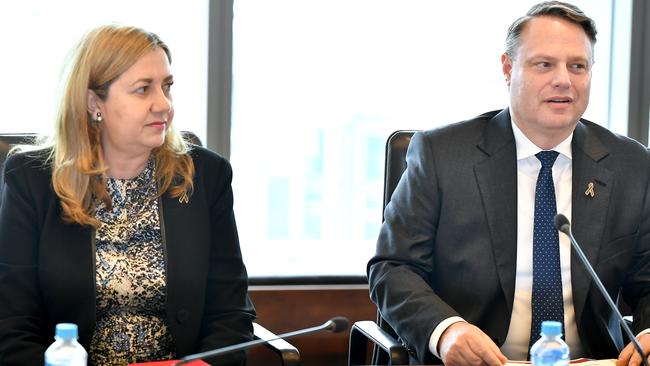
It was the last straw for Adrian Schrinner, the calculated snub that shattered his confidence in the Queensland government’s ability to deliver the 2032 Olympic Games and deepened the crisis engulfing Premier Annastacia Palaszczuk’s leadership.
The Brisbane Lord Mayor missed a phone call from the state’s Sports Minister, Stirling Hinchliffe, at 4.21pm last Thursday, November 30. It was about a meeting from which Schrinner had been pointedly excluded.
Outside a conference room in the Labor government’s high-rise HQ at 1 William St, representatives of the Brisbane Lions AFL club, Queensland Cricket and the Royal National Agricultural and Industrial Association responsible for the beloved Ekka show were waiting to be told they were collectively on the hook for $90m for a new stadium and millions more in lost income for the codes when the Gabba was bulldozed in 2025 and rebuilt for the Games.
The requirement for Brisbane City Council to also stump up was conveyed to the absent Schrinner in a letter from Hinchliffe emailed at 5.01pm.
No consultation, no pretence at courtesy. Just an outline of a deal with the government that BCC, the AFL and the Lions, Cricket Australia and Queensland Cricket were never going to accept because of the financial implications, especially for the sports codes.
The terms, broadly, were that the state would chip in $47m to the projected $137m cost of the new stadium, initially a temporary 20,000-seater to be converted to a 12,000-seat permanent structure post-2032. The idea was to create a stand-in for the Gabba for the four years it would be out of action.
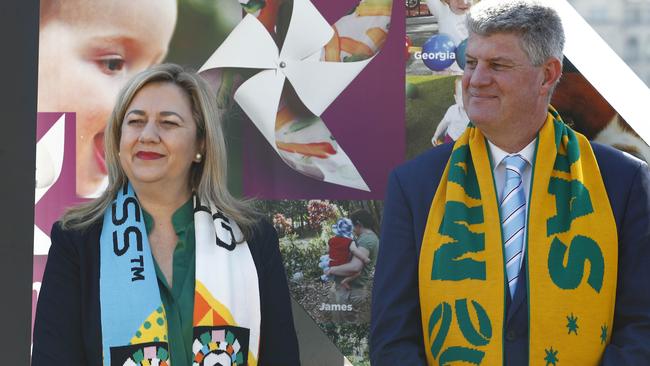
No guidance was provided on how the outstanding $90m was to be carved up between the codes, BCC and the RNA. And there was a kicker. The codes had wanted compensation from the state for having to play in smaller venues than the 42,000-seat Gabba between 2025 and 2029. They were long-term paying tenants of the government-owned ground after all, and they stood to lose millions from the displacement.
The issue was particularly acute for the Lions given the club is $13m in debt. Queensland Cricket operates as a not-for-profit.
Instead, the government offered loans to cover the displacement losses – calculated at $45m by the cricketers – but made it clear the money would have to be repaid eventually. Schrinner’s reading of Hinchliffe’s letter was that BCC would be expected to take carriage of the RNA stadium project as well, on land it didn’t own. Understandably, the only party that showed any enthusiasm was the RNA, which revealed it had offered to contribute $15m.
“We were gobsmacked,” says one of those summoned to the 43-storey “tower of power”.
“You could describe the reaction from the codes in particular as one of disbelief and disappointment. No one saw it coming.”
Another source briefed on the meeting told The Weekend Australian: “It wasn’t the course of action that we were anticipating so, yes, a few jaws dropped in the room. The sentiment was probably … shock.”
The fallout has been brutal, capping a year that has gone from bad to worse for Palaszczuk’s third-term government as it gears up to face the voters at next October’s state election.
Not only did Schrinner quit an important Olympics committee, the Intergovernmental Leaders’ Forum, in disgust at the “ham-fisted and foolish attempt to extort Brisbane ratepayers”, he aired for the first time his long-held reservations about the $2.7bn redevelopment of the Gabba stadium to create the Olympic Games’ centrepiece venue.
Breaking point
The political bipartisanship that attended the Olympics since Schrinner, an LNP stalwart, travelled with Palaszczuk to Tokyo in 2021 to secure the tournament has fractured. Schrinner said there had to be a “better option” than demolishing the iconic cricket and AFL stadium to start over again.
In other words, the Gabba should be refurbished rather than be rebuilt, to save money.
“I believe that the government has completely lost its way on the road to the Games,” he fumed.
“This has put the promised legacy for our city, our region and our state in serious jeopardy.”
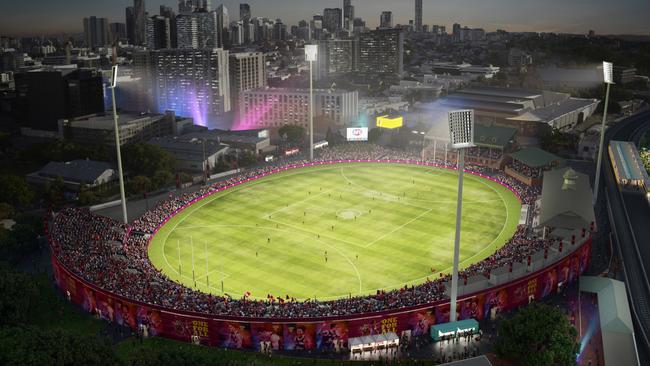
The fiasco has reinforced growing concern within and around the state government about the increasingly dysfunctional decision-making processes under Palaszczuk. Like Anthony Albanese federally, the Queensland Premier looks besieged and out of touch. Christmas holidays and the opportunity to recharge and reset can’t come soon enough for Palaszczuk. Her support in the Labor caucus and among voters has plumbed new depths.
A Resolve poll published this week by Nine’s Brisbane Times news site showed that LNP leader David Crisafulli had extended his lead as preferred premier, 39-34 per cent, upending the 12-point advantage she commanded a year ago. Labor’s primary vote of 33 per cent trailed the LNP by four points.
On top of that, two party elders – former Goss government minister and one-time state ALP president Bob Gibbs and former Beattie-Bligh government minister and factional powerbroker Robert Schwarten – came out of the woodwork to voice what a growing number of serving Labor MPs won’t say publicly but readily admit in private: time’s up for Palaszczuk and she should go.
Political fallout
Jittery caucus members are aghast at how the RNA stadium decision was bungled – “clusterf..k” is the term of choice. Said one MP: “How did we screw this up so badly? This should have been worked out two years ago.”
Another complained: “The RNA announcement was a complete disaster. It was a grenade we didn’t need to throw.”
Rather than being an electoral asset for Palaszczuk, a showcase of Labor’s capacity to realise the “generational benefits” the Olympics are supposed to bring, infrastructure planning for the Games has devolved into a circus.
Consider the record to date: a 170 per cent overrun on preliminary costings for the Gabba from $1bn to $2.7bn amid mounting scepticism the spend can be contained to that; uncertainty about whether the federally funded $2.5bn Brisbane Arena will proceed as a challenging build above the Roma Street railway station; no detail on the big-ticket rail and road projects once touted as key to the Games legacy; concern that labour and capacity constraints in an already-booming construction sector will add to the expense and push delivery deadlines.
Granted, it’s early days and if there are to be teething problems with the Olympics preparations, now is the time to have them. The issue with the RNA stadium lies in the process run by the state, a systemic problem. Consultations with the codes had been under way for more than a year, with the footballers and cricketers advancing different agendas. Both groups, however, were chafing at the lack of detailed feedback.
Sporting backlash
In July, Queensland Cricket CEO Terry Svenson vented his frustration in an open letter to supporters of the sport. “There are significant unknowns around the Gabba project, including the level of detail needed by stakeholders about the decision-making process for the Gabba and related infrastructure projects,” he wrote.
“The planning and the relevant time frames for delivery of this critical infrastructure is now causing considerable uncertainty for cricket in Queensland.”
The Lions and AFL were in favour of the RNA option from the start because it would allow the club to play in central Brisbane while the Gabba was down, against the options of Carrara on the Gold Coast, the 1982 Commonwealth Games venue of QEII stadium in suburban Nathan or the Lions’ high-performance centre at Springfield, west of Brisbane.
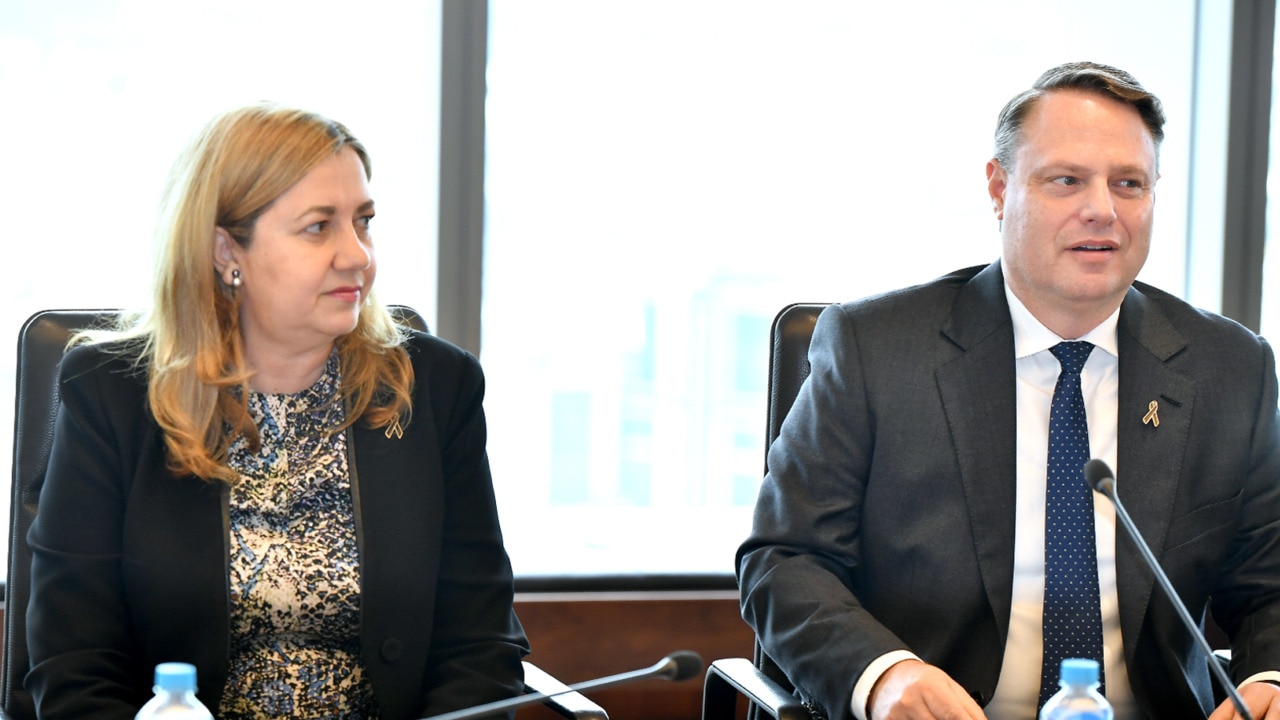
Queensland Cricket, for its part, wanted to expand to 10,000 seats the 3000-capacity Allan Border Field in Brisbane’s inner-north and take some international and interstate fixtures to the regions.
Both groups made detailed written submissions to the state government, and believed their case for displacement compensation for lost ticket and corporate hospitality sales was understood and accepted in principle by the stakeholder ministers, Hinchliffe, Deputy Premier and State Development Minister Steven Miles, and Palaszczuk.
A decision from the government had been promised by November 30. So about 9.30am last Thursday, Svenson and Lions CEO Greg Swann separately took calls from the director-general of the Department of Tourism, Innovation and Sport, Andrew Hopper, asking them into 1 William St for a briefing that afternoon.
There turned out to be quite a crowd: from the government side, Hopper was joined by acting deputy under-treasurer Robert Fleming, Stadiums Queensland boss Todd Harris and Richard Watson, a senior officer from Trade and Investment Queensland seconded to the Brisbane 2032 Co-ordination Office.
Swann arrived with Lions chair Andrew Wellington and chief operating officer Sam Graham, while Svenson was accompanied by Queensland Cricket chair Kirsten Pike and government relations manager Geoff Teys. The RNA was represented by general manager Dianne Rigg and chief financial officer Andrew Moore.
While Hopper professed that the government’s proposals were “not the final word by any means”, that wasn’t the message some participants got. “It was presented as a fait accompli and we would have to sign on with an NDA if we wanted more detail,” one of them said.
Note was taken of who was not at the meeting: Schrinner nor anyone from the council, a glaring omission when BCC would be party to any new stadium development. Some also wondered why not a single minister had bothered to put in an appearance.
Financial pressure
The consternation of the codes’ delegations grew as Hopper ran through the financials. Bad enough that each party would be up for $22.25m if the RNA stadium cost was split evenly between them, but there was deep anger that the Gabba displacement costs were to be heaped on the anchor tenants, the Lions, Cricket Australia and Queensland Cricket.
“Effectively, we were being told that not only will you pay to build this fill-in stadium for the Gabba … you will pay for the privilege of incurring substantial losses to move there as well,” said one participant in the meeting.
“People couldn’t believe it was a serious proposal.”
It didn’t help that Miles had on November 24 flagged that a decision on the RNA stadium was still months away. Hinchliffe is wearing much but not all of the blame in caucus. Some colleagues say Palaszczuk and her office should have anticipated the backlash, which hit peak discomfort for the government when the man regarded as the nicest guy in Australian sport, Usman Khawaja, warned Queensland Cricket would be bankrupted if it had to absorb the displacement costs of moving from the Gabba.
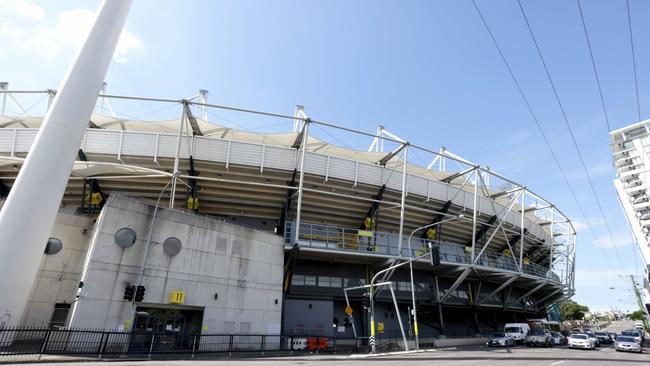
“It is one thing to pick a fight with Schrinner but you don’t take on lots of people at the same time,” one MP said. “The three ministers responsible for the Olympics are bumbling around in the dark.”
Schrinner’s anger grew when he realised the RNA stadium plan had been dropped to The Courier-Mail before he had had a chance to respond to Hinchliffe, the final affront as far as he was concerned. He went public, warning: “The Games are a once-in-a-lifetime opportunity for Brisbane and Queensland. But unless the state government’s approach changes, the opportunity will be squandered through mismanagement.”
His withering takedown was echoed on Friday by former federal LNP minister Matt Canavan who, writing in the Brisbane daily, renewed a call for the Gabba redevelopment to be paused, pending the development of a “proper business case” on whether the stadium should be refurbished or rebuilt.
Crisafulli is keeping his options open, saying he doesn’t have enough detail to form a view of the projects, which account for nearly three quarters of the $7.1bn budgeted for Games venues under a cost-sharing deal between the state and federal governments.
The LNP leader says one of his first actions were he to become premier next October would be to reinstate the independent infrastructure delivery authority that Palaszczuk dumped when she brought the oversight function in-house through the 2032 Coordination Office. This was despite a commitment made to the International Olympic Committee at the time Brisbane bid for the Games that the stand-alone agency would be part of the architecture.





To join the conversation, please log in. Don't have an account? Register
Join the conversation, you are commenting as Logout